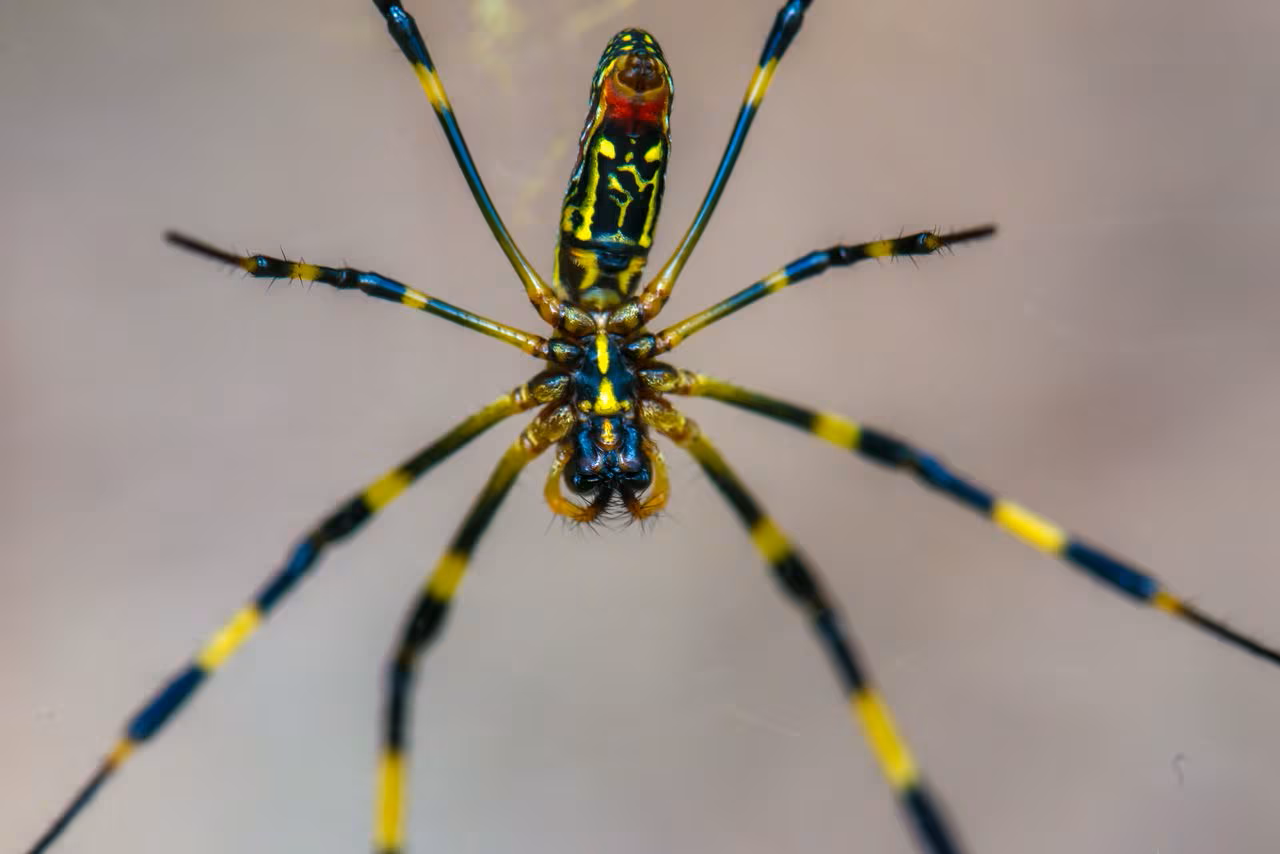Giant spiders could soon be parachuting into New York
Giant Joro spiders reached the US in 2014, and are now said to be taking over the country state by state
Your support helps us to tell the story
From reproductive rights to climate change to Big Tech, The Independent is on the ground when the story is developing. Whether it's investigating the financials of Elon Musk's pro-Trump PAC or producing our latest documentary, 'The A Word', which shines a light on the American women fighting for reproductive rights, we know how important it is to parse out the facts from the messaging.
At such a critical moment in US history, we need reporters on the ground. Your donation allows us to keep sending journalists to speak to both sides of the story.
The Independent is trusted by Americans across the entire political spectrum. And unlike many other quality news outlets, we choose not to lock Americans out of our reporting and analysis with paywalls. We believe quality journalism should be available to everyone, paid for by those who can afford it.
Your support makes all the difference.Giant spiders about the size of a human hand are set to become the latest creatures to roam around the New York City streets alongside the subway rats and the (supposed) sewer alligators.
Experts are warning that the city may soon be invaded by a swarm of Giant Joro spiders which “balloon” through the air on giant webs and attach themselves to vehicles headed for the Big Apple.
And these spiders are far from the typical critters you often see crawling out of your bathtub drain.
José R. Ramírez-Garofalo, an ecologist at Rutgers University, New Jersey, explained that the spiders’ huge size will make them hard to miss.
“They get pretty large — larger than really any other spiders we have in our area,’’ he said, according to Silive.com.
The spiders originate from East Asian countries like Japan, Korea, Taiwan and China but have been making their way across the United States since 2014 – when they were first discovered in Georgia.
The critters are believed to have most likely made their way to the US travelling on board cargo ships.
Since touching down on US soil, the spiders have started to meander through other southern states, with sightings in Tennessee, the Carolinas, Maryland and further west in Oklahoma, according to a study by Clemson University.
Mr Ramírez-Garofalo said that due to their travelling patterns, it is only a matter of time before they hit the Big Apple.
“Right now, we are seeing them dispersing into Maryland, so soon enough, possibly even next year, they should be in New Jersey and New York,’’ he said to the outlet.
“It is a matter of when, not if.”

The ecologist said that the Joro spiders use their thick webs like parachutes to travel in the breeze from place to place.
They also hitch rides in vehicles across the country, making it easy for them to spread around the US.
But should Americans be worried about this spider invasion? And what will happen when the critters reach New York?
Well, the jury is still out on the Joro spiders’ impact on natural habitats.
Some experts have branded them “invasive” species, as they are not fussy about what they eat.
A study on the spiders led by David Coyle, a professor at Clemson University, explained that the spiders could be harmful to native wildlife as they can wipe out any other critter on the food chain.
“These spiders don’t seem to care what gets in their web; they’re just as likely to eat brown marmorated stink bugs as they are to eat a Monarch butterfly,” Mr Coyle said in a news release about the study.
“These are not just benign spiders coming to catch and kill bad things; these are pushing out native species and catching and killing whatever happens to get in their webs,” he said. “Are they bad or good? It’s very nuanced depending on your perspective.”
However, Andy Davis, a researcher at the University of Georgia, feels differently, arguing that they have little impact on local food webs or ecosystems but instead might serve as a food source themselves for birds.
One thing experts can agree on is that they are not harmful to humans or large animals and, in fact, are quite shy creatures.
While their huge body, gangly legs and bright colours may give the impression they are dangerous, they actually try to avoid entering people’s homes as they prefer the outdoors and will freeze in a spot for over an hour rather than scutter around when they feel scared, according to a study by the University of Georgia.
Mr Ramírez-Garofal said that the spiders are venomous, but not potent enough to be concerning.
Their shy nature also makes them unlikely to bite humans and – even if they try – their fangs are too small to pierce the skin.
Experts say that the gentle giants are likely here to stay.
“They’re so good at living with humans that they’re probably not going away anytime soon,” Amitesh Anerao, co-author of the University of Georgia study, said.
Join our commenting forum
Join thought-provoking conversations, follow other Independent readers and see their replies
0Comments